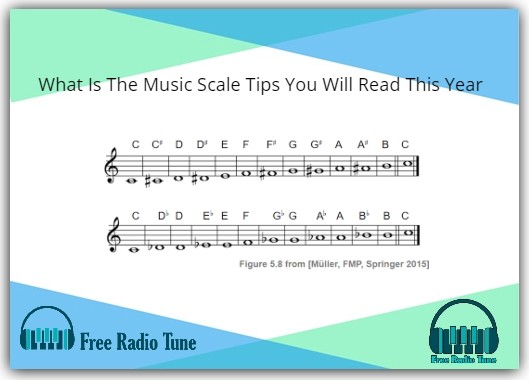What Is The Music Scale Tips You Will Read This Year
What is the Music Scale?
The original model was spread out in an octave music scale, while subsequent models went ahead and briefly recovered the notes in the octave.
The opportunity you need to create your music scale, ad-lib, or melody composition you can choose a key and comparison music scale and then use notes from that music scale for your tune (song) and melody (agreement). This is similar to your ‘note range’ for browsing.
Significant music scale and secondary scopes are the most well-known types, and there is a significant music scale for each significant key. Juvenile scopes are marginally more synthesized
(they come in 3 flavors: melodic, consonantal, and regular) yet they compare these lines to minor keys.
This arrangement of distances was: tone, tone, semitone, tone, tone, tone, semitone ঃ redistributing the cycle. This scale is known as the “significant scale.” We can use this
equivalent grouping (significant scale) starting with a note that was not C, but G. The scale will then be: Sol, La, Ti, Du, Re, Mai, Fa #, Sol.
Notice how similar logic has been followed (tone, tone, semitone, tone, tone, tone, semitone). In the main case, we form a significant size of C. In the latter case, a significant size of G.
Some ideas of music scale theory
In the musical hypothesis, the scale is any arrangement of melodic notes requested by the original iteration or pitch. The scale requested by pitch expansion is a climbing scale, and the scale requested by pitch reduction is the slippery scale.
Often, especially about the duration of basic practice, most or all of the melody and melody work contracts are fabricated using solitary level notes, which can be conveniently addressed to any staff with standard key marks.
Due to the octave being the guideline of equality, the scales are considered to exceed the octave alone and reproduce the increasing octave example. A melodic scale addresses a division of octagonal space into a certain number of scale steps, a scale step.
The unused distance (or span) between two progressive notes on the scale. Nevertheless, scale measures do not need to be equivalent within any scale. As has been shown by microtonal music, there is no limit to the number of notes in some random melodic spans.
How many types of music scale are there?
These 48 balanced scales consist of large and small structures. There are 12 distinct significant scales. There are three additional types of minor scopes. This includes the general, symphonies, and melodic.
The amount of notes that make up a music scale of progressive nature among the progressive notes of scales helps support any culture region’s music scale.
Impossible to miss the quality of the sound. The pitch distances or extensions between the notes of the music scale reveal more about the sound of the music scale than the tones of ordinary numbers.
types of music scales:
- Chromatic or dodecaphonic (12 notes per octave)
- Nonatonic: 9 notes per octave, a chromatic variation of the heptatonic blues scale
- Octatonic: 8 notes per octave used in jazz and modern classical music
- Heptatonic:7 notes per octave the most well-known current Western scale
Hexatonic: 6 notes for each octave basic in Western people music
Pentatonic: 5 notes for every octave the anhemitonic structure (lacking semitones) is normal in society music, particularly in Asian music; otherwise called the “dark note” scale
How do you find the scale of a song?
Recognizing MAJOR and MINOR
- Mark the significant scale in the key addresses (look for the last sharp or last level).
- Find the overall minor opportunity (see a minor third).
- Take the rhinoceros towards the beginning and end chords to decide whether the music is major or minor.
An initial step is to discover a scale “shape” on the guitar with which you can play the’s tune (possibly not all – maybe a section), for instance, past Pentatonic Scale (or comparative). Whenever you’ve done that – suppose you recognize it as a significant scale in A – that gives you the key of the melody.
How musicians need to learn music
Musicians should learn to read music at least. The basics which I’m going to show you in this video for one. I know quite a few musician friends. Who are great musicians, but they’ve never?
Learned to read music. I can only see that it is an insecure source for them. They lack confidence. And it always comes up in conversation when we’re talking about music. So
Reading music doesn’t have to take long to learn. Obviously, after that, you might have to practice.
It for a few weeks, maybe two weeks, but it’s fairly simple. And I’m going to break down the important things. It tells you rhythm now pitch means which notes to play and rhythm.
It means when to play. Those notes, so the pitch is the important part as far as. I am very concerned about the really important part of the pitch. And the good news is pitch is the easy part to learn rhythm.
However, it is the hard part to learn. It takes a lot longer to learn all these different rhythms and different note lengths. The length of the rest in different ways triples everything to these dotted things. And it’s
Not as important for the one you can listen to the piece of music. and learn the rhythm just by listening to it once through. You can also see the rough idea of how the rhythm should
Sound just by looking at the music, how the notes are spaced out, and all of that so in my opinion. In case you’re keen on learning the rudiments of understanding music. At that point, don’t stress over it.
The beat is the thing that sets aside a great deal of effort to learn that’s.
What scares a great many people from figuring out how to understand music scale
In my opinion, it’s not that, so there are different types of clef. There are two main types of the clef. Which a treble clef and bass clef you could think of treble clef. As the right hand on the piano.
It’s the upper part and bass clef as the left hand on the piano. Is the lower part now the way music works with any stave is the lines. And the spaces are each their note so to move up.
A note you go from a line to space to align to space the space means. The space between the two lines, so with the treble, clef the bottom line.
Then the second line is a G the second. Space is an A, and then it just goes up from. There so b c d e and f now the easy way to identify notes quickly.
An acronym to remember the five lines so the common. One that I was always taught is every good boy deserves food. And catchy, I know, but it’s stuck, and that’s. What I’ve always used and if you have your acronym that you use.
which is what the spaces spell
For example, the spaces so, e.g., B well B plus one is going to be C or D plus. One is going to be e now. The other thing to mention is
That these aren’t just any old e not just. Any old G, any old B these are specific notes. Within a specific octave, so with the treble clef.
On the piano. Now it may be possible to go up and down these notes. The stave, so there are just five lines but obviously. These notes can go above those notes.
Conclusion:
Due to the octave comparison criteria. The scales are considered to exceed most of the solitary octaves. At the same time, the sequential octaves redefine the example.
A melodic scale addresses a division of octal space into a certain number of scale steps, with the apparent distance (or span) between two progressive notes of the scale being a scale step.
Nevertheless, the scale steps do not need to be equivalent within any scale. And there is no restriction on the number of some random harmonic stretch notes—especially those performed by microtonal music.





